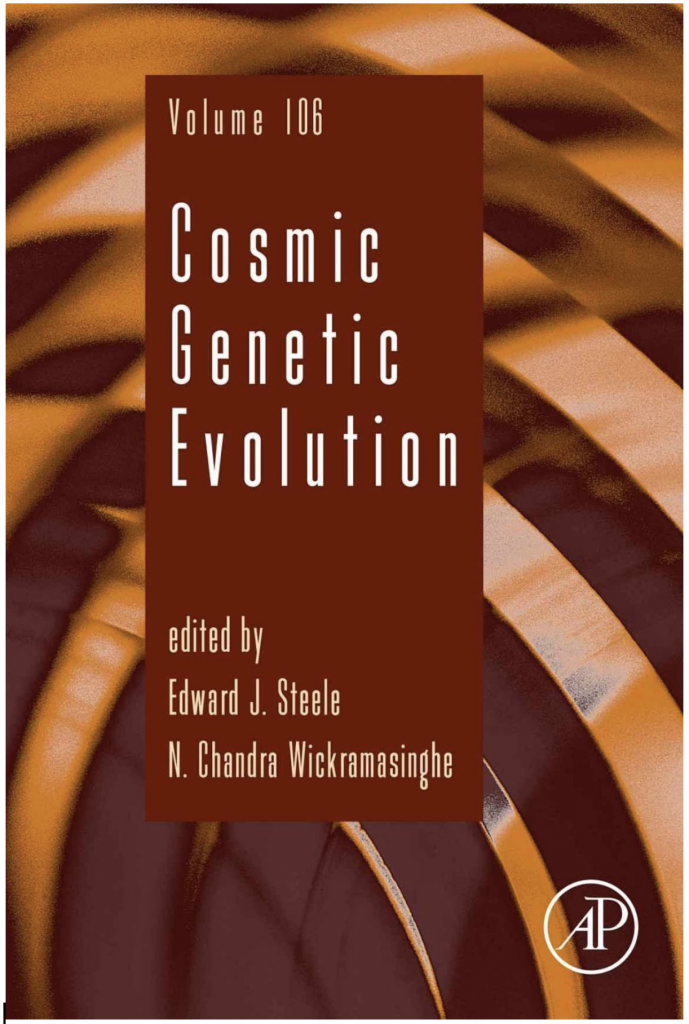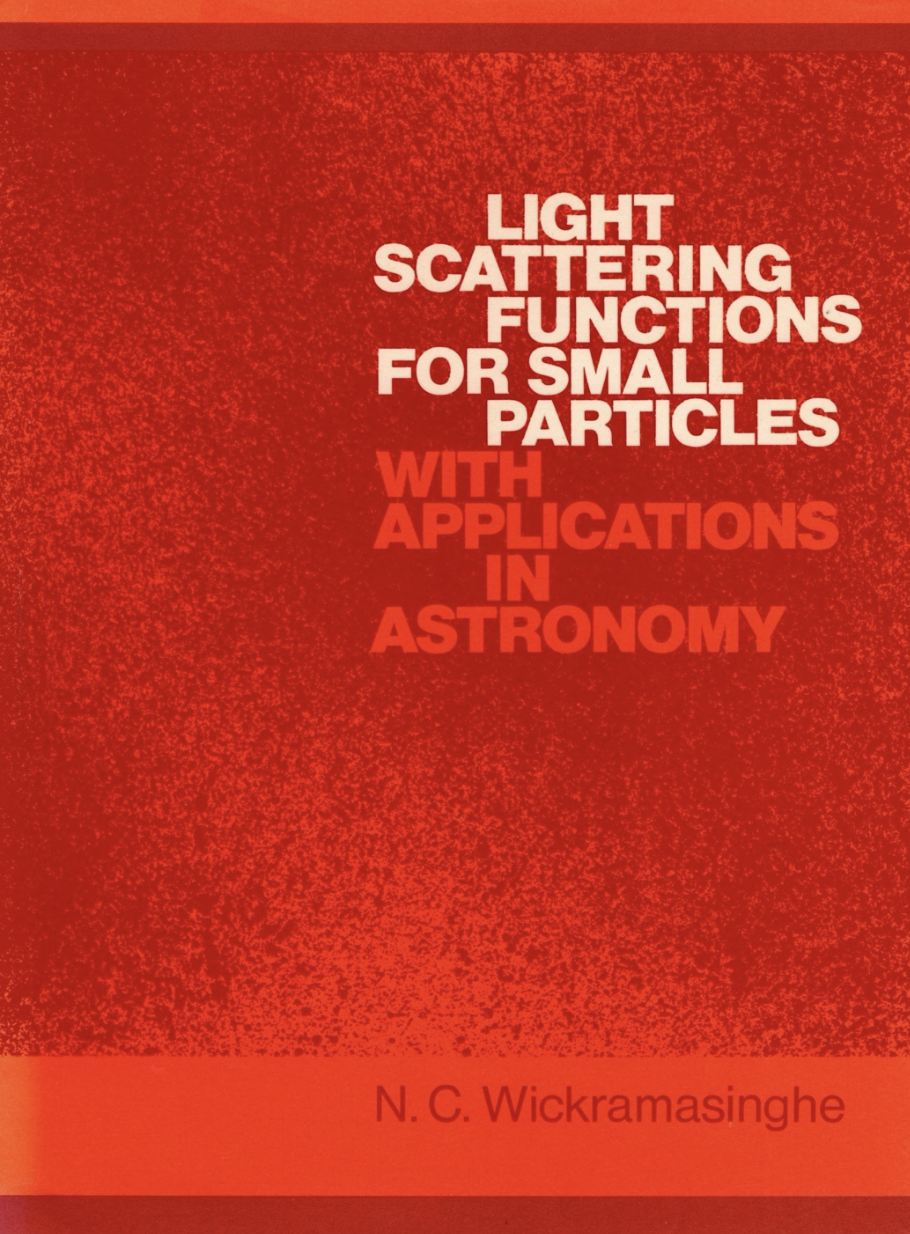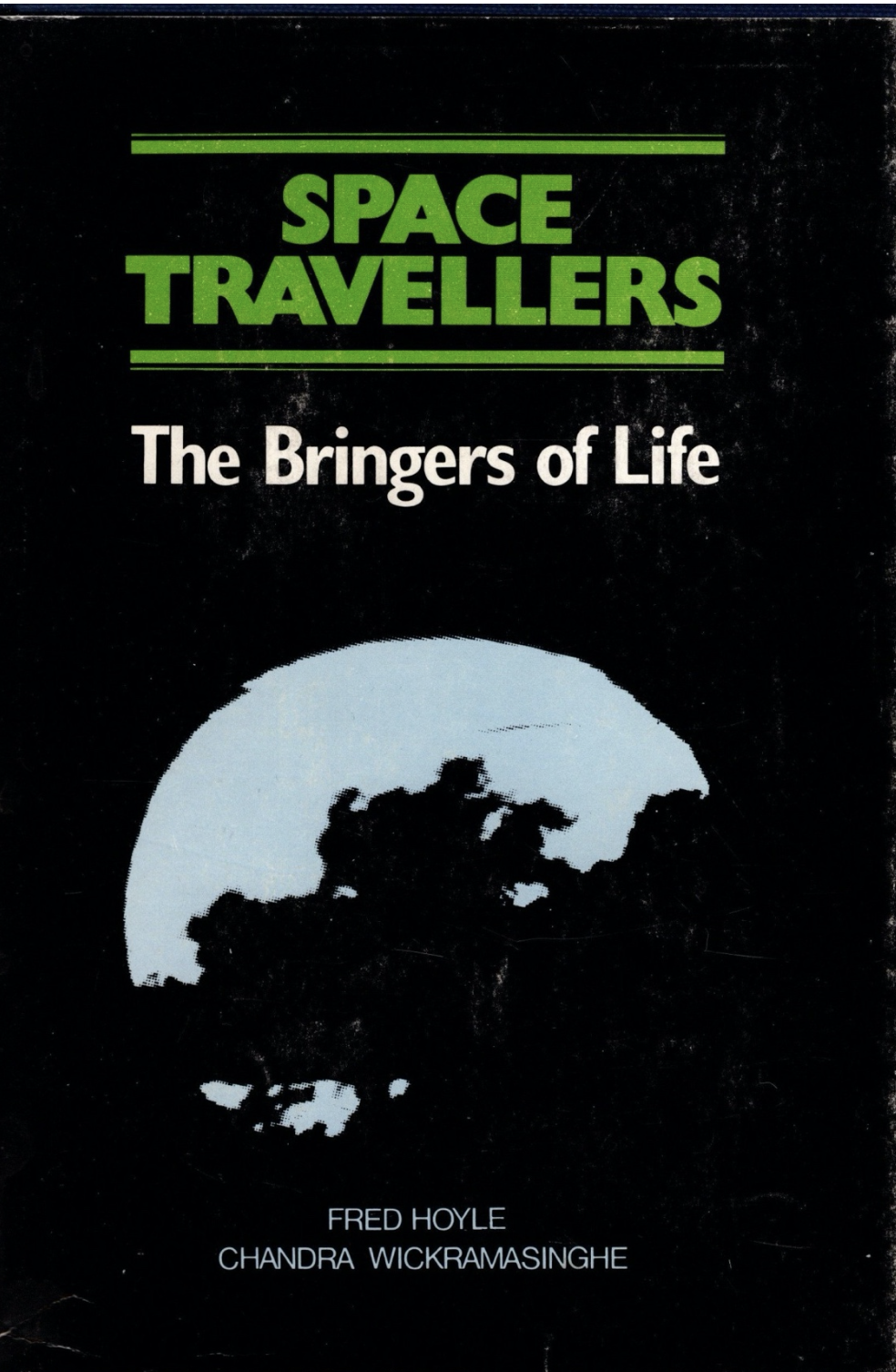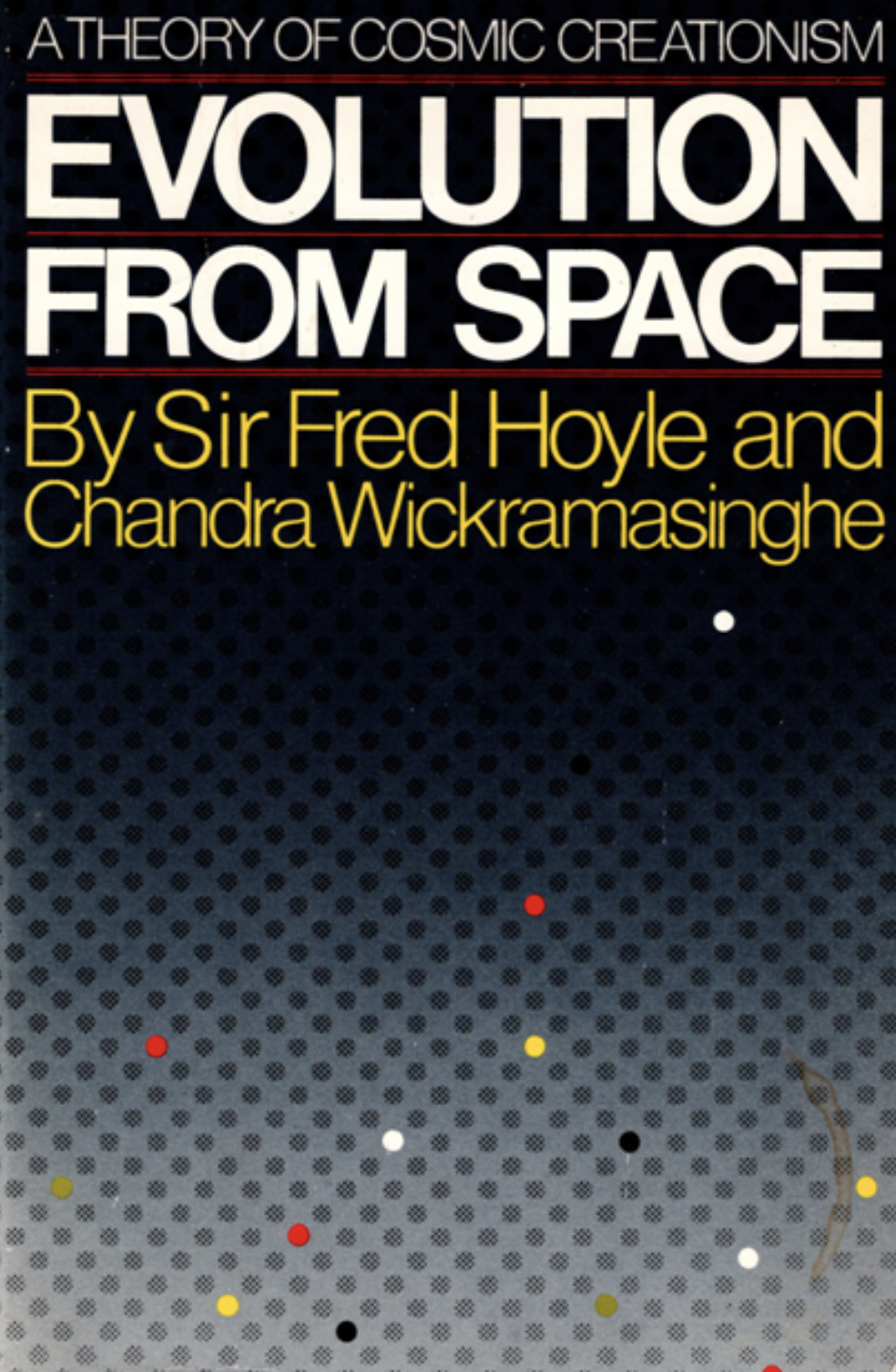
Publications
Volume 30
Cosmology and the Origins of Life
INTRODUCTION TO VOL. 30 in Progress
1. N. Chandra Wickramasinghe, Jayant V. Narlikar and Gensuke Tokoro, Cosmology and the Origins of Life, New evidence related to the origins of life in the cosmos combined with continuing progress in probing conditions of the early universe using the James Web Telescope suggest that long-held orthodox positions may be flawed. Only by objective evaluating the new facts and recognising the cultural forces at work can further progress be made towards resolving perhaps the most important and fundamental questions in science. pp 30001 – 30013.
2. N. Chandra Wickramasinghe Life Beyond the Limits of Our Planetary System, Evidence for the widespread distribution of biologically relevant molecules widely throughout the Galaxy and beyond has been in existence for many decades. The recent discovery of a nucleobase uracil adds to an already impressive body of evidence that supports a cosmic origin of the complex building blocks of life. pp 30020 – 30024.
3. N. Chandra Wickramasinghe and Gensuke Tokoro, Quest for Life on Jupiter and Its Moons, The final confirmation of the existence of multicellular life in aqueous habitats on the moons of Jupiter, will be a game changer for the societal approval and acceptance of panspermia which has been long overdue. pp 30030 – 30034.
4. N. Chandra Wickramasinghe, Gensuke Tokoro, Robert Temple and Rudy Schild Reluctance to Admit We Are Not Alone as an Intelligent Lifeform in the Cosmos, With an ever-increasing body of evidence from diverse scientific disciplines all pointing to the existence of alien life and alien intelligence on a cosmic scale, there has developed a growing tendency to maintain that we might still be alone as intelligent beings in the universe. This a stubborn resistance to admit facts may well signal the end of our civilization. pp 30040 – 30053.
5. N. Chandra Wickramasinghe, Rudy Schild and J.H. (Cass) Forrington Second Copernican Revolution, The recent discovery by the James Webb Space Telescope of organic molecules possibly related to life in a galaxy at redshift z=12.4 may well signal a concluding phase of the second Copernican revolution, thus removing the Earth from the centre and focus of biology and charting a new course in our understanding of the universe, and concluding a process that began 4 decades ago. pp 30060 – 30071.
6. N. Chandra Wickramasinghe, Rudy Schild, Gensuke Tokoro, Robert Temple and J.H. (Cass) Forrington Search For Aliens, and UFO’s, The widespread existence of primitive life in the form of bacteria and viruses in the universe combined with the large numbers of habitable planets that are being discovered, leads to the serious possibility that intelligent life could be widespread throughout the cosmos. Discovering such alien intelligence in our vicinity continues to pose a challenge. pp 30080 – 30089.
7. N. Chandra Wickramasinghe, Rudy Schild and J.H. (Cass) Forrington A Note on a Biological Explanation for the ERE Phenomenon, Whilst we have attempted to account for many of the properties of interstellar dust with a primarily biological/bacterial model, one remaining set of observations that needs to be understood relates to the so-called Extended Red Emission (ERE) phenomenon. This phenomenon is also elegantly explained with a biological model of dust. pp 30100 – 30107.
8. N. Chandra Wickramasinghe Cosmicrobia: A New Designation for the Theory of Cosmic Life, The common belief is that the present author and Fred Hoyle in the late 1970ís embarked on a programme of work to revive the discredited, two and a half millennia-old, theory of panspermia on a whim. In this article I attempt to clear up this misconception and show that we were guided inexorably toward such a goal as a flood of new supporting data came to light from astronomy, geology as well as biology. This is an important record to set right as evidence continues to grow in the direction of supporting the theory of life being a cosmic phenomenon. pp 30120 – 30128.
9. Rudy Schild, J.H. (Cass) ForringtonN. Chandra Wickramasinghe, Robert Temple, Gensuke Tokoro, Rueben Wickramasinghe Search for UFOs and Aliens: Modern Evidence and Ancient Traditions, An important priority for the coming decades will be to face up to the possibility that as an intelligent life-form on Earth capable of wreaking untold damage to our biosphere, we may not be alone. The possible presence of intelligent alien life in our cosmic vicinity should be faced with honesty, fortitude, as well as creativity. Recent testimony presented at a US Congressional hearing will be all too easy to dismiss as delusions or inventions, but caution needs to be exercised before such action is taken. pp 30135 – 30145.
10. N. Chandra Wickramasinghe and Reuben C. Wickramasinghe Life and the Universe: a Final Synthesis, The long-overdue synthesis between microbiology and the universe, after many setbacks, may at long last be in sight. The full implications of the transition may well lie in the future for the benefit of the coming generations of scientists. pp 30160 – 30174.
Bibliography. Theodore Walker Burbidge, Burbidge, Fowler, Hoyle, and Wickramasinghe, et.al., An Annotated Bibliography with Notes on ìCosmology and the Origins of Life and Evolution, including biological evolution, behavioral evolution, stellar evolution, life as a cosmic phenomenon, cosmic life, panspermia, astrobiology, cosmic biology, and cosmic evolution. pp 31000 – 31065.
COSMIC GENETIC EVOLUTION
Cosmic Genetic Evolution, Volume 106 in the Advances in Genetics series, highlights new advances in the field, with this new volume presenting interesting chapters on Panspermia, Cometary Panspermia and Origin of Life, The Efficient Lamarckian Spread of Life in the Cosmos, The Sociology of Science and Generality of the DNA/RNA/Protein Paradigm Throughout the Cosmos, The Mutagenic Source and Power of Our Own Evolution, Origin of New Emergent Coronavirus and Candida Fungal Diseases – Terrestrial or Cosmic?, and Future Prospects for Investigation -The Near-Earth Neighborhood and Beyond.


DISEASES FROM OUTER SPACE
Evolution from Space: (with Fred Hoyle) 1981
If life was introduced to the Earth as bacteria and viruses to Earth 4 billlion years ago, similar incursions of bacteria and viruses could cause pandemic diseases intermittently, as well as contribute to evolution.
OUR COSMIC ANCESTRY IN THE STARS
2019 update of the theory of cometary panspermia, and its societal impact


A DESTINY OF COSMIC LIFE
The scientific autobiography of Chandra Wickramasinghe, beginning with his early life in his home country Sri Lanka.
SPACE AND ETERNAL LIFE
Journeyman Press, 1997


A DESTINY OF COSMIC LIFE
A collection of the key papers that sets out the development of the Hoyle-Wickramasinghe theory of cometary panspermia, published in 2001.
VIRUSES FROM SPACE
We examine the data relating to epidemic diseases caused by viruses and argue that their epidemiology fits the concept of viruses from space


ASTRONOMICAL ORIGINS OF LIFE
The key technical papers on the Hoyle-Wickramasinghe theory of panspermia upto the turn of the millennium.
LIFE OF AN ASTROBIOLOGIST
A scientific autobiography describing the background and development of Chandra Wickramasinghe in relation to his contribution to astrophysics and astrobiology.


THE SEARCH FOR OUR COSMIC ANCESTRY
The scientific case for our cosmic ancestry is presented here in a book published by World Scientific in 2015
LIGHT SCATTERING FUNCTIONS FOR SMALL PARTICLES WITH APPLICATIONS IN ASTRONOMY
A technical monograph of theory and computations needed for modeling the scattering properties of interstellar dust.


LIFECLOUD: THE ORIGIN OF LIFE IN THE GALAXY
The popular explosion of the idea that organic molecules from interstellar space and comets were responsible for the origin of life, on Earth and elsewhere in the Universe
SPACE TRAVELLERS
The distribution of life in the solar system is discussed in relation to evidence from space exploration, connecting with the theory of panspermia


EVOLUTION FORM SPACE
With growing evidence supporting the theory of cometary panspermia this book published by J.M. Dent London in 1982 shows how the evolution of life on our planet is controlled by the arrival of bacteria and viruses from space.
LIVING COMETS: (WITH FRED HOYLE)
Comets are discussed as the carriers and distributors of life throughout the galaxy and the universe


INTERSTELLAR GRAINS,
First technical book on cosmic dust, following mainly from the PhD thesis of Chandra Wickramasinghe
A JOURNEY WITH FRED HOYLE
The story of the interaction and collaboration between Chandra Wickramasinghe and Fred Hoyle over 40 years.

